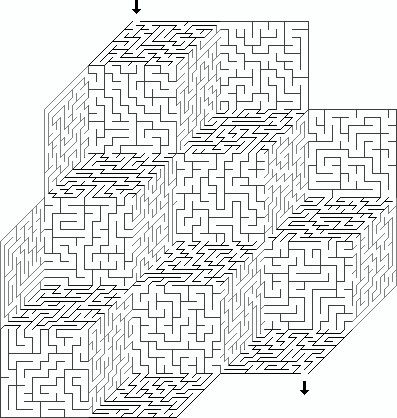What One Team Member Taught Us About Leadership, Learning, and Letting Go
Last week, we marked a very special milestone as Angga transitioned out of the TraceWorthy team. He joined TraceWorthy as a junior lawyer several years ago, and when he did, he arrived with very little experience. What he did bring was a quiet determination, an open attitude, and a willingness to try. At the time, that felt like enough. In truth, it was not. His early work was inconsistent and required significantly more oversight than that of his peers. Documents lacked structure. Grammar and spelling were unreliable. The work needed to be redone. It slowed the team down.
There were honest discussions behind the scenes. Conversations about whether Angga could meet the standards required of TraceWorthy lawyers. It would have been easy to quietly end the working relationship. Instead, we asked a harder question: what would happen if we trained him differently?
Why Supporting Underperforming Employees Requires More Than a Performance Review
Traditional performance reviews are designed to assess. They are rarely designed to understand. When someone repeatedly misses the mark, the assumption is often lack of effort, poor attitude, or misalignment with company values. In Angga’s case, none of those applied.
His willingness to improve was never in question. What he needed was a different learning path. And so, we committed to finding it.
“His journey taught us that performance issues are often not about commitment or intelligence. Sometimes, it is a matter of how someone receives information — and whether anyone is patient enough to teach them differently.”
Tracy Wilkinson, Founder
A performance review tells you what is happening. It rarely tells you why. It may confirm a pattern, but it will not uncover the barriers to change. In Angga’s case, the patterns were clear: repeated errors in written work, difficulty with structure, and issues that would resurface even after extensive correction. What we needed to explore was whether those patterns pointed to a skill gap, a cognitive processing difference, or something else entirely.
Supporting underperforming employees means moving beyond surface-level feedback. It involves asking better questions, testing different interventions, and refusing to equate mistakes with a lack of potential. It also requires leaders to slow down — something that feels counterintuitive when business is moving quickly. But slowing down allowed us to observe, trial, and learn.
We were not trying to rescue Angga. We were trying to understand how he worked, how he learned, and how we could create an environment where he could contribute meaningfully. That approach takes time, patience, and a willingness to do things differently.
What We Learned Along the Way
Here are some of the practical insights that emerged from supporting Angga’s employee development:
- A repeated pattern of mistakes is not always a sign of carelessness. It can be a learning style mismatch.
- Soft skills and legal skills must be developed side-by-side.
- Company-wide training initiatives work best when no one is singled out.
- Feedback must be direct, but never shaming.
- Visual processing can play a key role in how someone understands legal structure and logic.
- Growth plans need to be tailored, not standardised.
Recognising the Gaps Others Might Overlook
The early signs pointed to something beyond typical professional development gaps. Angga processed information differently. His errors were not careless. They were consistent in a way that suggested something deeper.
That realisation marked the beginning of one of the most meaningful employee development journeys we have undertaken as a team.
What We Noticed Early — and What We Chose to Do Instead
We began by embedding structured communication training into the business. Two hours per week, company-wide. Not because everyone needed it in the same way, but because raising the floor raises the ceiling. The aim was to create a shared baseline — one where Angga could build his skills without being singled out.
We also built quiet routines around peer review and collaborative editing. Every lawyer benefited. But we were watching closely to see if Angga’s progress would hold.
Tailored Learning Approaches That Changed Everything
The breakthrough came when we stopped expecting Angga to succeed using the same tools as everyone else. Instead, we asked a much better question: what kind of support would actually work for this individual?
That question led us to try new methods. Some were unconventional. Some felt like a stretch. But the results spoke for themselves.
From Legal Documents to Spot-the-Difference
We trialled word puzzles, visual games, and language pattern exercises usually reserved for early education settings. It might sound unorthodox, but the results were revealing. Angga excelled in visual processing. He was far stronger at recognising patterns in images than in text.
That changed everything. We realised his learning needed to be more visual, more spatial, and more structured than the standard format allowed.

Building Confidence Through Public Speaking and Pattern Recognition
Angga, and the rest of the TraceWorthy team, was given the opportunity to participate in Toastmasters and other public-facing tasks to stretch his confidence. It worked. Slowly, Angga’s communication sharpened. His self-assurance grew, as did other team members.
Eventually, he became someone we could rely on to represent TraceWorthy externally — something few would have predicted if they had met Angga in his first year.
Designing Support That Works for the Individual
We stopped thinking in terms of catch-up. The goal was never to push Angga through a generic upskilling process. Instead, we designed a learning experience tailored to the way he absorbed and organised information — an approach that made his employee development not only possible, but sustainable. That thinking now informs how we support others across the team, including doing so in a way that is benefitting the entire team.
Leadership in Employee Growth Begins with Asking Better Questions
This journey reframed how we approach development — not through policy though. Through people. It became clear that coaching and compliance are not interchangeable. One demands consistency; the other demands curiosity.
We began asking questions that were not performance-based, but person-based:
- What kind of feedback actually lands with this team member?
- What helps them build confidence instead of defensiveness?
- Where are they strongest, and how can we build outward from there?
- What assumptions are we making about their learning process—and are those assumptions fair?
The answers changed how we mentor, how we review, and how we lead.
Growth is a Shared Responsibility
It would have been easier to label Angga’s early mistakes as a mismatch and move on. Instead, we chose to co-own the outcome of our employee development. That meant structured coaching, yes — but also holding space for setbacks, and being transparent about where the bar was set.
Leadership became less about pushing progress and more about creating the conditions where it could happen.
Feedback Without Shame
What changed the tone entirely was our approach to feedback. Corrections became conversations. Reviews became coaching sessions. Angga did not resist the feedback. He worked with it, sometimes with more grace than expected.
We made it clear that feedback was not a signal of failure. It was a show of faith in someone’s potential. That shift in tone made growth sustainable.
The Power of Patience in a Fast-Paced Business
Everything in modern business suggests speed. But nothing in human development responds well to urgency. Patience gave us time to listen, notice, recalibrate, and try again. It allowed us to adapt without lowering our standards.
One overlooked benefit of patience is what it signals to the team: that TraceWorthy does not measure value by speed alone.
Letting Go for Growth: When It is Time to Step Aside
Eventually, Angga received a job offer for a more senior position — one that offered personal growth and further employee development in a direction we could not provide. His departure was not a surprise. It was the logical next step. We were not preparing him to stay. We were preparing him to succeed.
There was no attempt to counter the offer. No guilt. No regret. That clarity came from knowing we had done the work that allowed Angga to fly the proverbial coop.
The Quiet Signs of Readiness
Readiness often arrives quietly. There were no declarations or turning points. His work began landing with more confidence. His contributions became more strategic. And one day, the corrections stopped coming. That was the moment we knew he was ready — long before his resignation.
What We Built Together
Angga contributed more than legal output. He shaped our employee development and our training systems. He reshaped how we approach onboarding. He challenged us to expand how we think about talent, ability, and support.
The structures we now use across our teams — blending legal, financial or administrative rigour with soft skill development, communication with cognition — were sharpened through our work with him.
When Farewell Is the Outcome of Success
It is difficult to say goodbye to someone who has become part of the team’s fabric. But there is pride in letting someone go when they are fully ready.
The real measure of our investment is not in retention. It is in what they carry forward.
A Call to the Leaders Who Want to Build Differently
If you are building a team in Indonesia, and if you believe — like we do — that your people are the strategy, speak with us. We work with foreign investors, business owners, and leadership teams who want to design employment structures that support growth, loyalty, and capability.
We are ready to listen. Book a consultation with the TraceWorthy team today.

